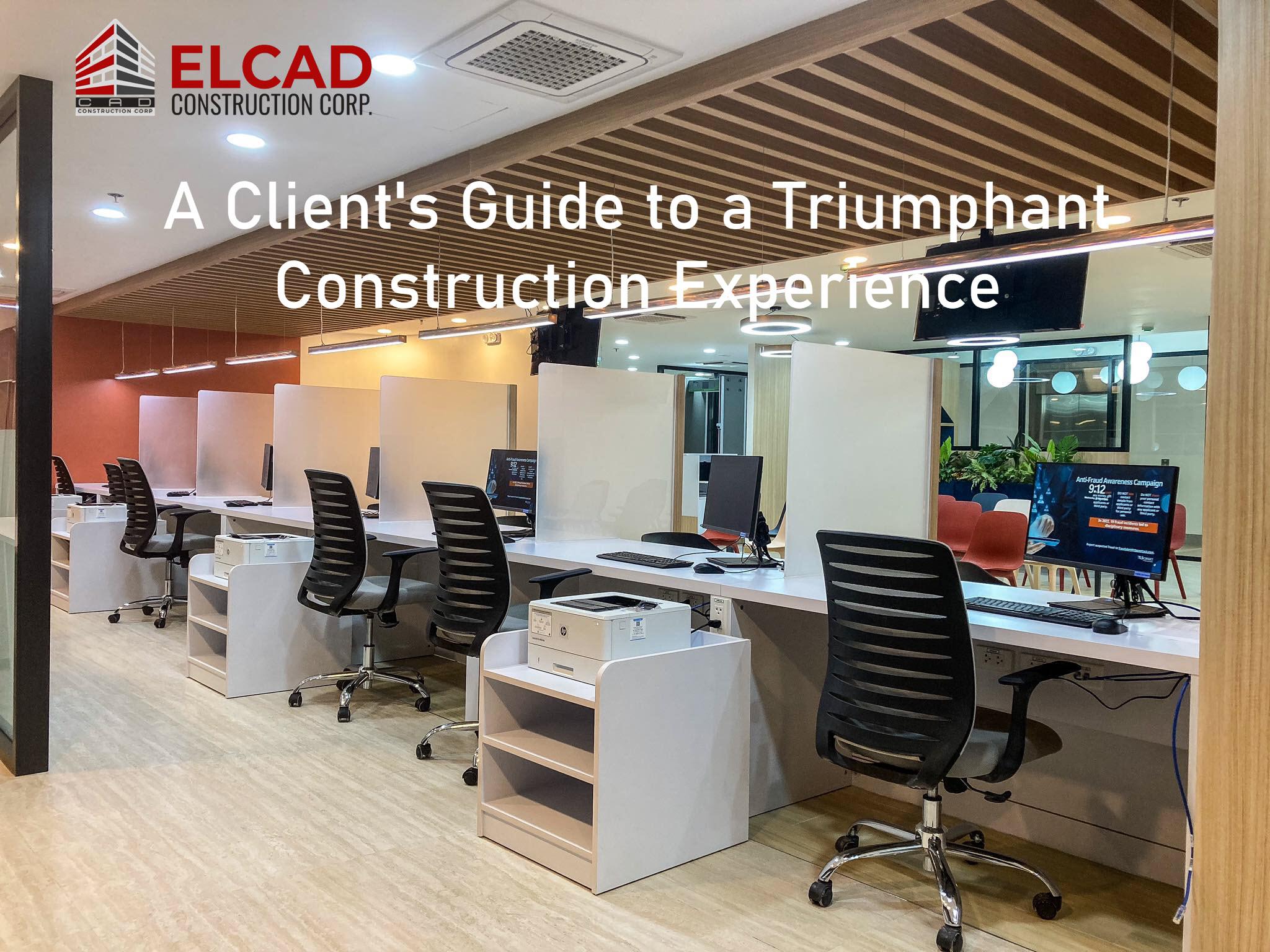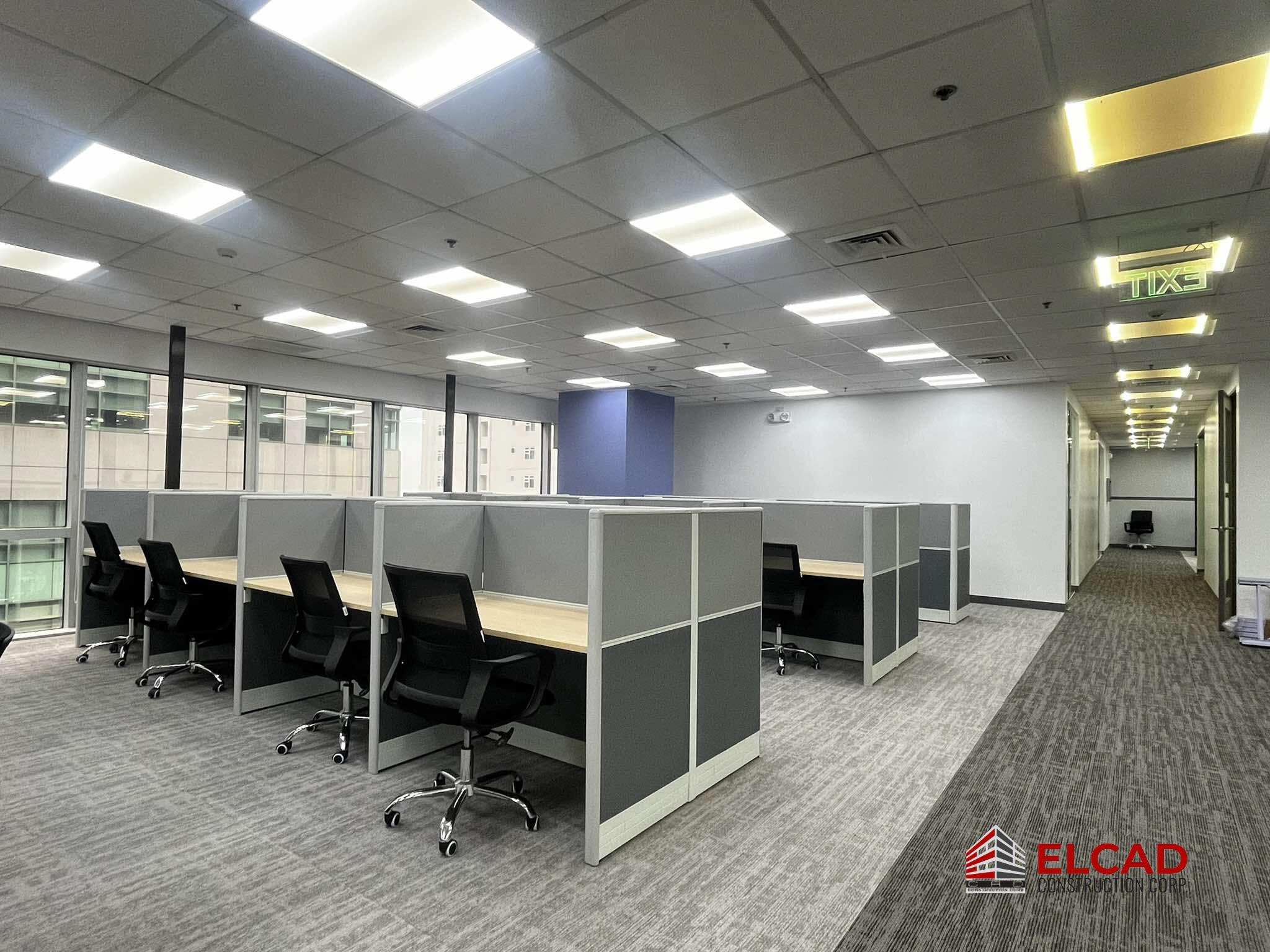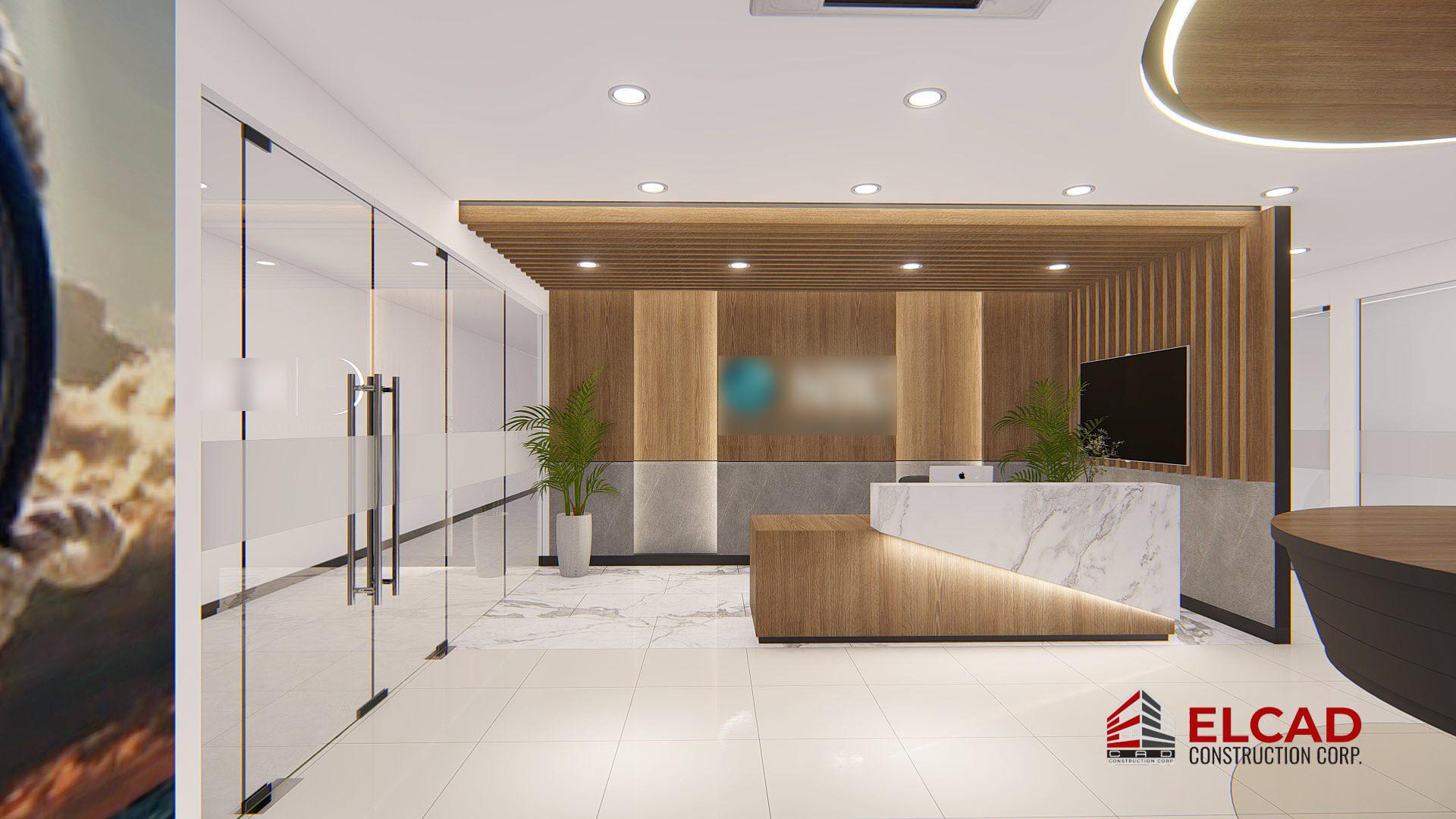Welcome to the world of Fit-Out Mastery, where construction excellence meets client empowerment. At Ellcad Construction Corporation, we understand that embarking on a fit-out project is not merely a physical transformation but a journey toward creating spaces that resonate with your vision. In this guide, “A Client’s Guide to a Triumphant Construction Experience,” we provide invaluable insights and step-by-step guidance to ensure your construction experience is not just seamless but truly triumphant. From conceptualization to the final touches, let us navigate this transformative process together, making your vision a tangible reality.
STEP 1: ASSESSMENT OF OFFICE SPACE
The initial stage of a successful fit-out project is the thorough assessment of the office space. This crucial step involves:
- Finalizing Office Space: Confirm the official location of the office to ensure we have the correct details for planning and execution.
- Scheduling an Ocular Visit: Arrange a physical visit to the office premises to conduct a detailed inspection of the layout, dimensions, and condition of the space. This visit will provide valuable insights into potential challenges or opportunities that may arise during the fit-out process.
- Obtaining Floor Plan: Request a copy of the existing floor plan, which serves as a blueprint of the office layout. This document will guide our team in understanding the spatial relationships between different areas and identifying potential areas for modification.
- Gathering Construction Guidelines and As-Built Plans: Procure copies of the construction guidelines and as-built plans, which provide essential information about the structural integrity, building codes, and any existing infrastructure within the office space. These documents will help us ensure compliance with regulations and avoid potential conflicts with existing systems.
STEP 2: SPACE PLANNING
Effective space planning is the cornerstone of a functional and productive office environment. This step involves carefully considering the needs of your organization and translating them into a well-structured layout that optimizes space utilization and promotes collaboration.
- Identifying Required Areas and Capacities: Provide us with a detailed list of the areas and rooms you require within your office space. Clearly indicate the capacity of each area, ensuring sufficient space for the intended occupants and activities.
Here are some commonly used office areas:
- Production Area: Dedicated space for workstations and equipment used for core business operations.
- Executive Room: Private space for high-level meetings and strategic decision-making.
- Manager’s Room: Individual workspace for managers to oversee their teams and conduct private meetings.
- Meeting Room: Flexible space for team meetings, collaborative discussions, and client presentations.
- Board Room: Formal meeting space for important presentations, board meetings, and strategic planning sessions.
- Pantry Area: Designated area for employees to take breaks, prepare snacks, and socialize.
- Reception Area: Welcoming space for visitors, clients, and potential employees to interact with the company.
- Server/EE Room: Secure and controlled environment for housing IT infrastructure and electrical equipment.
- Clinic/Lactation Room: Dedicated space for providing healthcare services and a private area for breastfeeding mothers.
- Sleeping Quarters: Accommodates employees who require overnight stays or rest during extended work hours.
- Storage Room: Organized space for storing office supplies, equipment, and documents.
- Tailored Office Layout: Once we understand your specific requirements, we will meticulously design a customized office layout that aligns with your company’s culture, work processes, and aesthetic preferences. We will carefully consider the flow of traffic between different areas, ensuring seamless movement and collaboration.
By engaging in thorough space planning, we create an office environment that fosters productivity, promotes teamwork, and enhances the overall work experience for your employees.
STEP 3: TECHNICAL REQUIREMENTS
Technical requirements play a critical role in ensuring the functionality, safety, and comfort of your office space. This step involves gathering detailed information about your company’s operational needs and preferences to make informed decisions about the technical aspects of the fit-out.
- Flooring Selection: Determine your preferred flooring material based on factors such as aesthetics, durability, maintenance requirements, and acoustic considerations. Common flooring options include carpet, vinyl, and tiles.
- Ceiling Design: Choose between an open ceiling or a ceiling with acoustic boards. Open ceilings provide a spacious feel and allow for easier access to utilities, while acoustic boards help reduce noise levels and improve sound quality.
- Operational Hours: Indicate whether your office operates 24/7 or has specific operational hours. This information is crucial for planning electrical systems, lighting configurations, and security measures.
- Electrical Outlets and Data Infrastructure: Specify the number of convenience outlets, data nodes, and voice nodes required per workstation. This will ensure adequate power and connectivity for your employees’ devices.
- Wireless Connectivity: Determine whether you require Wi-Fi access throughout the office space. This is essential for seamless internet connectivity for employees and guests.
- Security Systems: Discuss your security needs, including access control systems, surveillance cameras, and intrusion detection systems. These measures can help protect your company’s assets and ensure the safety of employees and visitors.
- Pantry Facilities: Decide whether you need a sink in the pantry area. This will determine the plumbing requirements and layout of the pantry.
- Workstation Partitions: Indicate whether you require partitions for workstations to provide privacy and sound separation. This will influence the design of the office layout and the selection of partition materials.
By gathering and analyzing this information, we can tailor the technical aspects of the fit-out to align with your company’s unique requirements, ensuring a functional, safe, and comfortable working environment.
STEP 4: 3D DESIGNS
Transforming your vision into a tangible reality is at the heart of Step 4: 3D Designs. This step involves harnessing the power of 3D technology to create stunning and realistic renderings of your future office space.
- Understanding Your Aesthetic Preferences: To capture the essence of your desired office aesthetic, we encourage you to explore our extensive collection of perspective compilations. Browse through these visuals and identify the styles that resonate with your company’s brand identity and workspace aspirations.
- Leveraging Corporate Branding Guidelines: Share your corporate branding guidelines with us, including your preferred color palette, typography, and logo usage. These guidelines will serve as a compass for our design team, ensuring that the 3D renderings align seamlessly with your brand’s visual identity.
- Customized 3D Renderings: Armed with your aesthetic preferences and branding guidelines, our design experts will meticulously craft customized 3D renderings of your office space. These renderings will provide a lifelike representation of the proposed layout, furnishings, and overall ambiance.
- Collaborative Refinements: Throughout the design process, we maintain open communication with you, inviting your feedback and suggestions. We welcome your input on the 3D renderings, ensuring that the final designs reflect your vision and aspirations.
- Visualization of Workspace Transformation: The 3D renderings will serve as a powerful tool to visualize the transformation of your office space. These renderings will allow you to envision the flow of traffic, the functionality of workstations, and the overall aesthetic appeal of the completed project.
- Informed Decision-Making: By providing you with detailed 3D renderings, we empower you to make informed decisions about the design and layout of your office space. This visualization tool will help you identify areas that require refinement or adjustment before construction begins.
- Envisioning Your Dream Office: The 3D renderings will ignite your imagination and allow you to envision your dream office coming to life. These realistic visuals will serve as a source of inspiration and motivation throughout the fit-out process.
STEP 5: PROJECT COST AND IMPLEMENTATION
The culmination of the fit-out construction process involves determining the project cost and embarking on the implementation phase. This step ensures transparency, financial planning, and a smooth transition from design to execution.
- Detailed Cost Breakdown: We will provide you with a detailed breakdown of all the necessary scope of works required to build the office and make it operational and functional. This breakdown will itemize the costs associated with materials, labor, permits, and other essential components of the project.
- Transparent Pricing: We strive to maintain transparency throughout the process, ensuring that you have a clear understanding of the financial implications of the project. The detailed cost breakdown will allow you to make informed decisions and plan accordingly.
- Final Cost Agreement: Once we have reached a consensus on the project cost, we will formalize the agreement through a written contract. This contract will outline the scope of work, deliverables, timeline, and payment terms.
- Implementation Phase: Upon finalizing the cost and contract, we will proceed with the implementation phase. This phase involves mobilizing our team, procuring materials, and executing the construction plan according to the agreed-upon specifications and timeline.
- Project Management: We employ a dedicated project management team to oversee the implementation process, ensuring that the project stays on track, within budget, and adheres to the highest quality standards.
- Communication and Collaboration: We maintain open communication channels throughout the implementation phase, keeping you informed of progress, addressing any concerns, and making adjustments as needed.
- Handover and Completion: Upon completion of the fit-out project, we will conduct a thorough inspection to ensure that the office space meets your expectations and complies with all safety regulations. Once satisfied, we will hand over the completed space to you.
By successfully navigating these five steps, we aim to deliver a seamless and successful fit-out construction project that transforms your vision into a functional and inspiring workspace.






